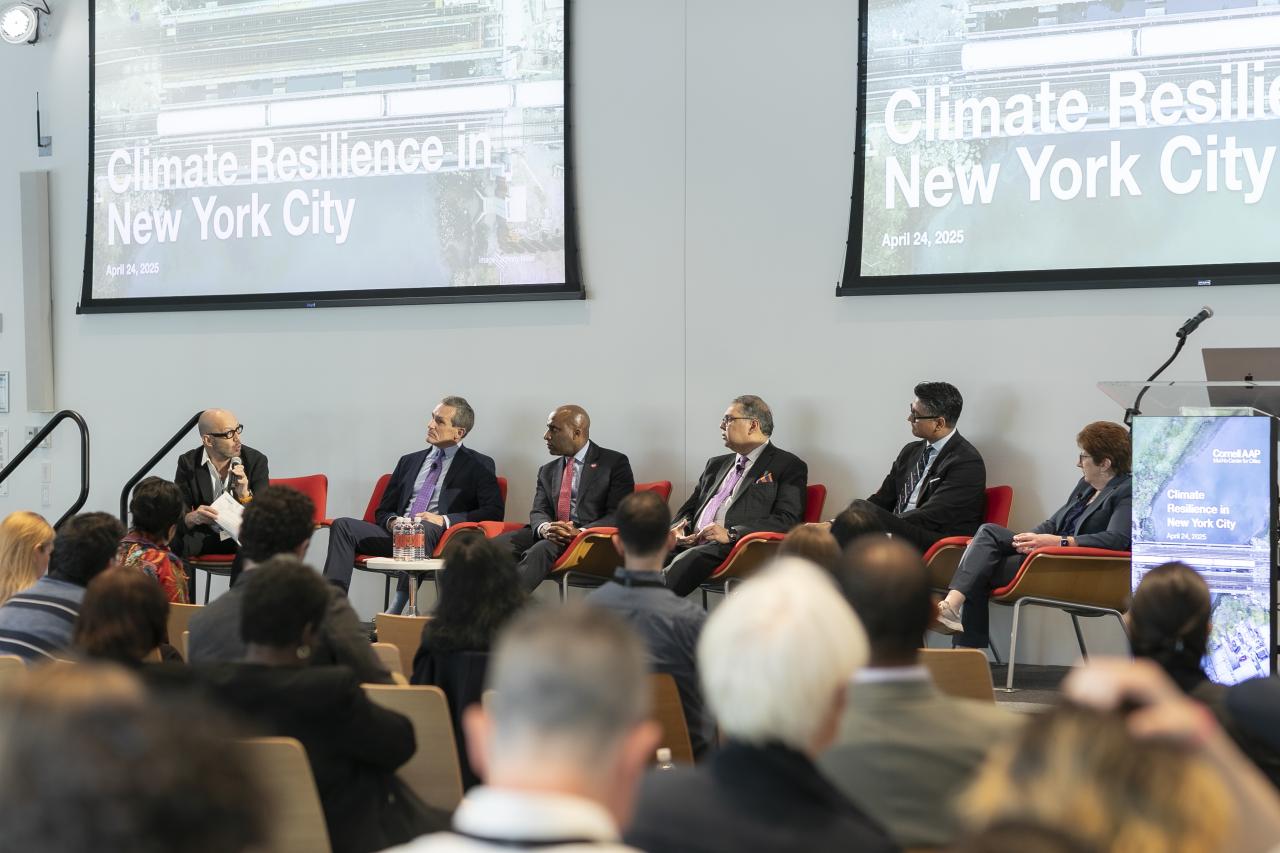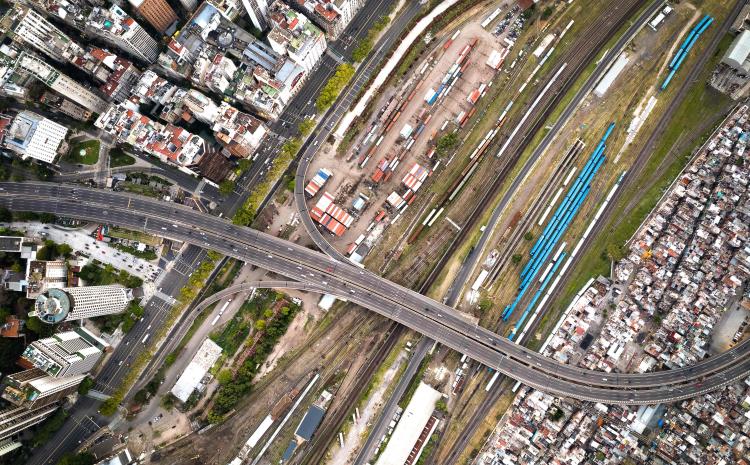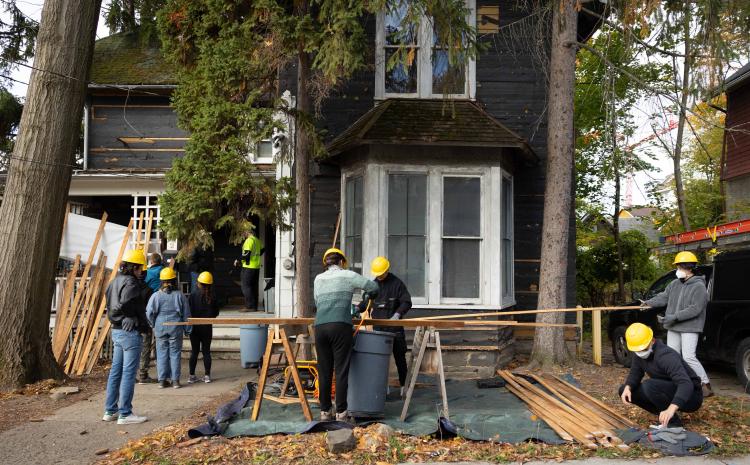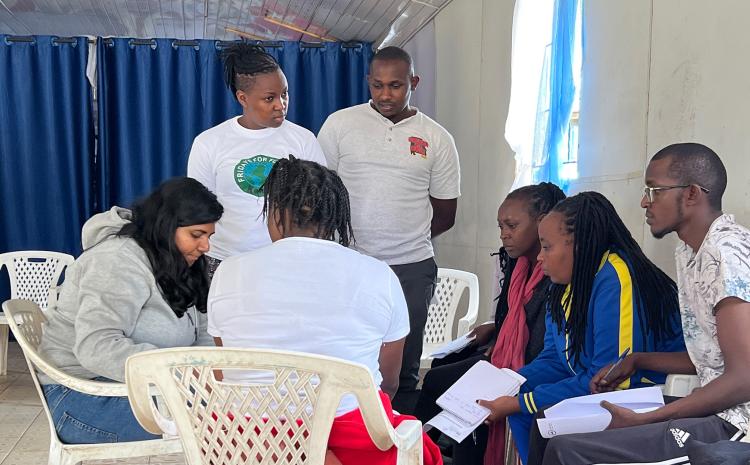Blogs
July 1, 2025
The Politics of Climate Resilience: What Do Mayors Have to Say?

It is not a good time for climate research, policy, or investments in the U.S. right now. Federal grants have been abruptly terminated; drastic staff and budget cuts have curtailed weather forecasting and disaster response capacities; and deeper cuts to environmental programs are proposed. Even saying "climate change" or "environmental justice" in some circles can come at a cost.
Regardless of the politics surrounding climate research and policy, summer is here, and it’s expected to be particularly hot. Hurricane season has already begun. Climate mitigation and adaptation measures are still essential, despite the drastic drop in funding and support from the federal government. So how can cities keep moving forward?
That question underpinned the conversations at the Cornell Mui Ho Center for Cities' April 24 symposium on climate resilience in New York City. Panelists from local government, civil society, and the private sector spoke about what's working, what gives them hope, and what urgently needs to change. The final panel, comprised of city mayors, highlighted a key element of successful urban climate action: visionary, engaged, and committed leaders. Jose Castillo, Professor and Chair of Architecture at Cornell, led a conversation with Mayor Kathy Sheehan, of Albany, New York; Mayor Michael Cahill, of Beverly, Massachusetts; Mayor Aftab Pureval, of Cincinnati, Ohio; Mayor Quinton Lucas, of Kansas City, Missouri, and Naheed Nenshi, former Mayor of Calgary, Canada.
"Mayors have all the problems and none of the resources," former Mayor Nenshi of Calgary said. "And we don't have the luxury to pretend that we can't talk about climate change, because our residents are dealing with it every single day."
The impacts are already severe. The Alberta floods of June 2013, when the Bow and Elbow rivers' flows peaked at eight and 12 times their normal rates, respectively, were particularly devastating: about 80,000 Calgary residents had to be evacuated, and one was killed. Across southern Alberta, property damage and losses reached $6 billion Canadian dollars. Mayor Pureval noted that Cincinnati has experienced "100-year storms" in 12 of the past 13 years, with floods and landslides.
How are mayors pressing forward in the current political environment? Mayor Lucas stressed the importance of simple, hyperlocal, depoliticized messages. When he began working to increase Kansas City's tree canopy, he would communicate this objective as “every kid in our city deserves some trees in their neighborhood, right?" Mayor Lucas further explained, "And you talk about the positive impacts of both the tree canopy and shade and safety and temperatures in your community.”
The mayors also used stories to reiterate the close links between social justice and resilience. For example, Mayor Sheehan recalled that after a major storm, she had noticed the utility company had sent trucks to clean up and restore power to wealthier neighborhoods like hers, while far more vulnerable people in low-income areas were left to wait. Afterward, she advocated for reversing how neighborhoods were prioritized for cleanup, explaining: "You know, in my neighborhood where I live, if we lose a refrigerator full of food, we're not going to miss a mortgage payment. … But in [some of] these neighborhoods… you've got really hard decisions to make.”
A panel on extreme heat exposure and urban adaptation earlier in the symposium had stressed the need to address energy poverty: Mayor Cahill and Mayor Pureval both raised this as a key concern as well. The CHIPS Act has brought a surge of technology investment in Ohio that is driving up energy demand and costs, so Cincinnati is working to expand and diversify its supply, including by investing in a major solar farm. For Beverly, Massachusetts, a key way to reduce energy costs is by promoting energy efficiency through the Mass Save program, which provides free energy efficiency audits and access to rebates and incentives.
A final key takeaway from the mayors' panel was that time is of the essence. Former Mayor Nenshi told symposium attendees that well before the horrific floods of 2013, Calgary had flooded in 2005, but nothing was done to enhance flood resilience. Even now, despite his advocacy, only one of the two new dams needed to protect Calgary is under construction; the other is still in design.
"Make sure that you are working to get commitments to get shovels in the ground while people are still remembering the impact of the weather event," he said. "If you wait for too long you'll end up in a situation where there's just no money; there's no time [to prepare before the next extreme weather event]."
Speaking to the need for timely action, Mayor Lucas noted that the Inflation Reduction Act included crucial climate investments, but it didn't deliver results fast enough, and lost popular support.
It's a balancing act, Mayor Pureval said. "What are the short-term wins I can put up on the board for my constituents?" He also prompted the audience to think about the long-term. "From a systems level, how can you change things? Not just for the next 10 years, but for the next generation."
New York City and several other major U.S. cities have mayoral elections this year, including Atlanta, Boston, Detroit, Miami, Minneapolis, New Orleans, Seattle – and Albany and Cincinnati. Now, more than ever, city leadership is key for addressing climate resilience.





